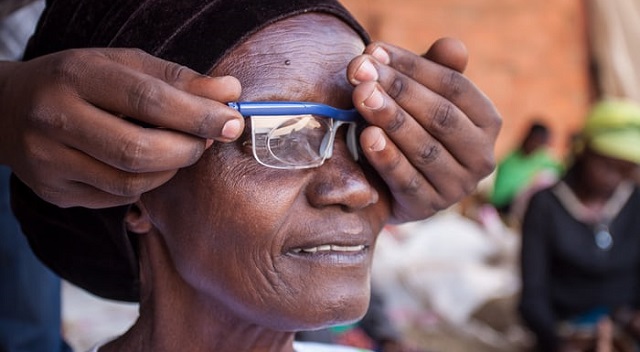
Kampala, Uganda | THE INDEPENDENT | According to the WHO report, people living in low income countries are affected most by blindness and impaired sight
It is estimated that over one billion people in the world are forced to live with eye impairments like short and farsightedness, glaucoma and cataract. This is according to a report by the World Health Organisation-WHO.
The report titled World Report on Vision is the first of its kind and was released by WHO to commemorate World Sight day celebrated every October 10. According to the report, people are forced to live with eye disease because there’s no access to care.
The report identifies ageing populations, changing lifestyles and limited access to eye care, particularly in low- and middle-income countries, are among the main drivers of the rising numbers of people living with vision impairment.
Dr Tedros Adhanom Ghebreyesus, the WHO Director-General says that governments should ensure that eye care should be included in national health plans as part of their commitment to provide universal health coverage.
“People who need eye care must be able to receive quality interventions without suffering financial hardship. Including eye care in national health plans and essential packages of care is an important part of every country’s journey towards universal health coverage,” Dr Tedros said.
The report estimates that globally, at least 2.2 billion people have a vision impairment or blindness, of which at least 1 billion have a vision impairment that could have been prevented or has yet to be addressed.
Dr.Tedros adds that so many people in the world are blind or have impaired sight due to lack of treatment services.
“It is unacceptable that 65 million people are blind or have impaired sight when their vision could have been corrected overnight with a cataract operation, or that over 800 million struggle in everyday activities because they lack access to a pair of glasses,” Dr Tedros said.
Findings of the report show that the most affected population with visual impairments come from low and middle-income regions of western and eastern sub-Saharan Africa.The burden being far greater in people living rural areas, women, older persons, persons with disabilities, ethnic minorities and indigenous populations.
Dr Alarcos Cieza, who heads WHO’s work to address blindness and vision impairment says that eye care services such as rehabilitation are needed to teach people with visual impairments how to live in a world dependent on sight.
“Millions of people have severe vision impairment and are not able to participate in society to their fullest because they can’t access rehabilitation services. In a world built on the ability to see, l eye care services, including rehabilitation, must be provided closer to communities for people to achieve their maximum potential,” Dr Cieza said.
The report recommends that people with visual impairment should be provided rehabilitation services such as; optical magnifiers and reading use Braille, to smartphone way finders and orientation and mobility training with white canes.
It is estimated that 14.3 billion dollars (52 trillion shillings) is needed to address the backlog of 1 billion people living with vision impairment or blindness due to short and farsightedness and cataracts.
The most common cause of eye blindness or impairments includes; cataract, trachoma, refractive error, dries eye, conjunctivitis, myopia, diabetic retinotherpay and late detection of eye diseases.
******
URN
 The Independent Uganda: You get the Truth we Pay the Price
The Independent Uganda: You get the Truth we Pay the Price


